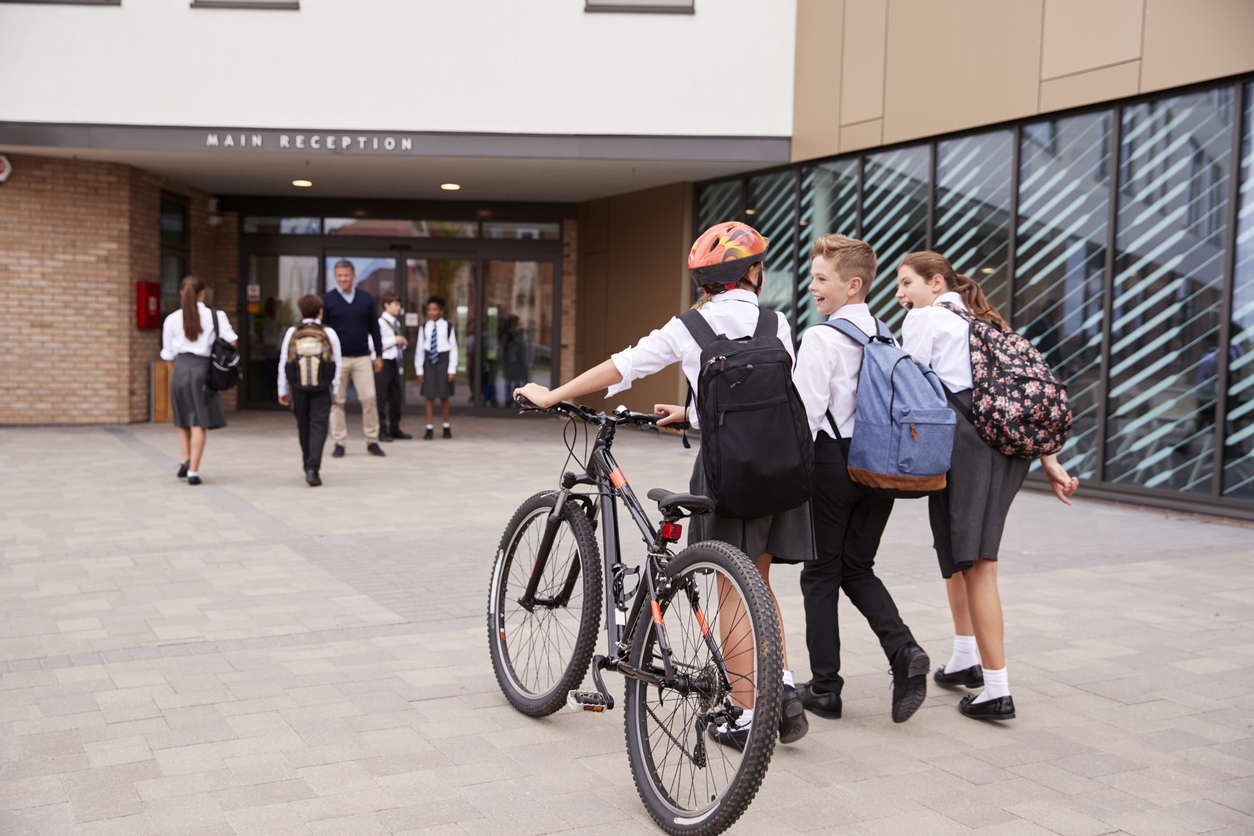High rates of student absence are an increasing issue across primary and secondary schools, with one in five children reported as being ‘persistently absent’ in school, meaning they miss at least 10% of lesson time.
Persistent absence causes many issues for both students and teachers. Teachers are left with an increased workload to help students catch-up, as well as helping to manage the social and emotional issues that occur when students miss school regularly.
Despite local authorities issuing fines for school absence, this hasn’t seemed to solve the problem in schools.
The reasons behind student absence are often complex, but some of the main reasons for students missing school include:
- Illness
- Mental health issues
- Bullying (both online and in-person)
- Poverty and the cost-of-living crisis
- Having Special Educational Needs (SEN)
- Having important responsibilities such as being a young carer
So, is there anything teaching staff can do to help tackle absence in schools?
We’ve compiled our top tips to help improve absence in your school, no matter whether you’re a senior leader, teacher, teaching assistant or support staff member. We can all play our part in improving this widespread issue.
What Is the Impact of Poor Attendance?
Student absence has a huge impact on various aspects of young people’s development, including:
- Lower academic achievement.
- Lower self-esteem.
- An inability to form lasting relationships with their peers.
- Poor employability upon leaving school.
There are ways that all educators can be the change for students and make school a place where all students feel welcome, safe and happy.
1. Persistent Absence Is a Safeguarding Issue
If a student is absent from school for a persistent period, it is important to immediately raise this as a safeguarding issue, if it is not already being addressed by the Safeguarding Lead.
Depending on the circumstances, there needs to be communication in place with parents or guardians.
A 2023 report from the Education Committee highlighted how cost-of-living pressures were a major barrier to attendance in some instances, particularly for students from disadvantaged backgrounds.
This means consistent support to help build a solid relationship between the school and parents or guardians can help to bridge the gap and make families aware of the options available to them to help with costs. This extra funding can help with uniforms and transport.
2. Make the Curriculum Relevant for Young People
Many young people can feel disillusioned by school if the curriculum doesn’t feel relevant to their everyday life, making it difficult for family and teachers to motivate them to come into school.
School should feel culturally enriching for students, so depending on the age group you work with, there are different ways you can ensure that all lessons feel fun, relevant and interesting for students.
Consider topics that are affecting students right now, such as the cost-of-living crisis, the impact of social media, the rise of youth crime, and other stigmatised issues.
Discussing these things openly with young people and linking your lessons to these areas allows students to feel that they are learning relevant, useful information that they can put into action in their everyday life.
In partnership with Make Life Kind Charity, our school speakers (A.K.A The Milkfluencers) connect with students by exploring sensitive and stigmatised topics, such as:
- Mental Health Support
- Neurodiversity
- Knife Crime & Gang Crime
- Body Positivity
- LGBTQ+ Issues
Register with us today to book a Milkfluencer session for your school, along with access to our FREE lesson plans, focused on a range of sensitive topics to help students navigate real-life situations with confidence.
3. Create a Whole-School Culture
Attendance should be encouraged across the whole school, and consistency is key when implementing this. Even if you aren’t in a senior teaching position, you can suggest some of the ideas below to help build better attendance rates from Key Stage 1, all the way up to sixth form or college. How can you promote good attendance across the whole school?
- Incentives and rewards for good/improved attendance.
- A whole-school policy outlining how to deal with persistent absence.
- Regular communication with parents or guardians.
- A deep commitment to engaging students when they are present.
- Punctuality being rewarded, and having a zero-tolerance approach to students who truant from lessons.
4. Provide Individual, Tailored Support
Once safeguarding concerns have been addressed, you may be able to provide individual, tailored support to particular students who struggle with their attendance.
It’s important to speak to these students and let them know that they are valued members of their class. Speaking to them on an individual basis can help students to recognise that their presence in the classroom matters and you genuinely care about them attending school.
These conversations also allow you to learn more about what engages these students, and you can then incorporate specific topics or ideas into your lessons.
Attendance mentors and attendance hubs are also a potential way to boost attendance. The government is planning to expand the current Attendance Hubs programme and support students to overcome barriers to attendance and support them getting back into school. The charity Barnardo’s offers an attendance mentoring service backed by the government.
5. Make the Classroom a Safe Space
A survey from Nesta highlighted that one in 10 students were absent at least once over a six-month period, as they felt unsafe in school.
How can you make students feel safer in school?
- Encouraging diversity and inclusion across all lessons and as a whole-school culture.
- Ensuring that bullying and poor behaviour are not tolerated and that offending students are given consequences.
- Creating a culture of listening to and respecting others.
- Having consistent routines in place and making students aware of any changes to these routines.
6. Bring Positive Influences into School
Students can often feel discouraged if they are constantly fed negative news and information. Instead, presenting them with real-life stories related to current stigmatised topics can help to bring positivity and inspiration to the classroom.
Our Milkfluencers, in partnership with Make Life Kind Charity, are here to discuss their real-life stories, using their own personal experiences of adversity and strength to connect with young people and inspire them to make better choices. Our school speakers visit schools and deliver sessions on a range of topics, such as:
- Racism
- Gang crime
- LGBTQ+ issues
- Body positivity
- Mental health and wellbeing
You can book our incredible Milkfluencers for sessions in your school today!
7. In-School Activities & Clubs
In addition to our Milkfluencer sessions, providing students with activities and clubs during school time can help to improve attendance, by giving students a feeling of belonging and community in school.
Clubs must feel relevant and purposeful to students, so consider what kind of hobbies and interests specific students have, such as football, gaming or music.
To help motivate students further, you can ask them to help run the club and organise different events or design posters to advertise meetings.
8. Incentives & Rewards
Rewarding improved and consistently good attendance can help to motivate students who are struggling to attend school.
Good attendance should be continually rewarded, through ongoing incentives or end-of-term or end-of-year trips. This ensures that students who always attend school are being rewarded, too.
Incentives don’t need to cost money and can be as simple as longer break times or a ‘Fun Friday’ lesson that involves music or technology. Having some light competition between different year groups or classes with the prospect of a reward at the end of each term may also work as an incentive for your students.
For younger students, rewards charts and attendance displays can work, but be careful not to exclude or shame students for not attending school. They may already feel isolated and anxious because of not attending, and this may make those feelings worse.
If your funding allows it, offering incentives to families can also have an impact on attendance. Providing access to resources and transportation passes can go a long way to support families.
This year, Milk Education is looking to Clear the List for educators to help fund the cost of resources for the classroom. Sign-up here for the opportunity to have your Classroom Amazon Wishlist cleared and provide your students with resources to help enrich their school experience.
You Can Make a Difference
It’s hard to ignore the impact of student absence, and it might seem like something that is out of educators’ control.
And a lot of the time, it is. Persistent absence is typically a complex, multi-layered issue that may require interventions beyond educators’ capacity.
However, hopefully this blog has highlighted how there are some actions educators can take to help improve attendance in schools. Focusing on these particular areas can make a real difference and, as a result, help young people to reach their full potential.

